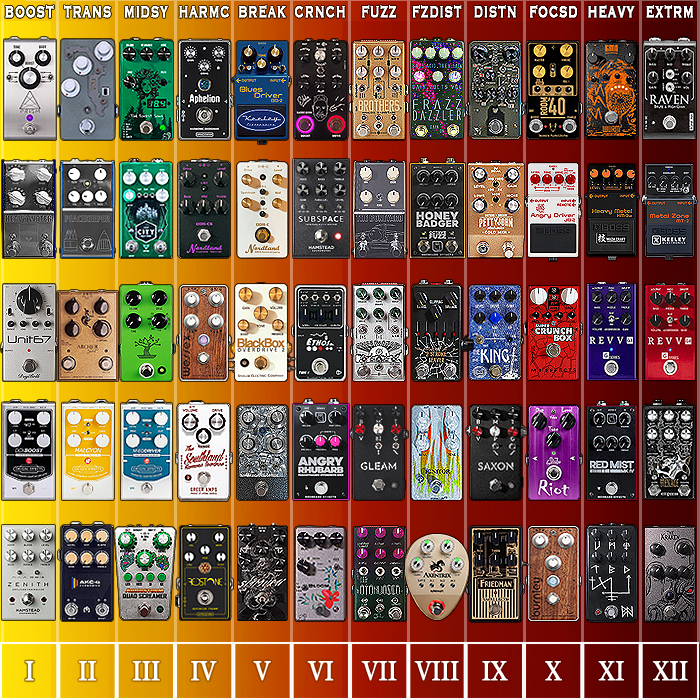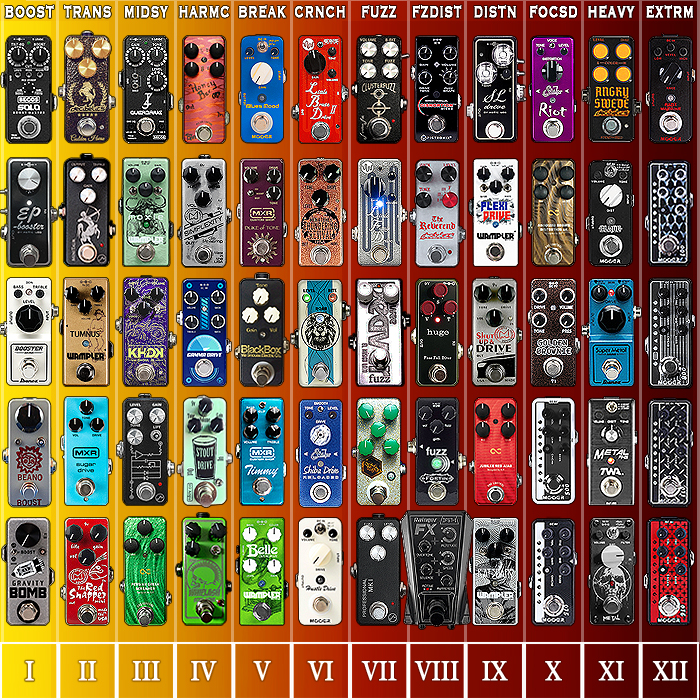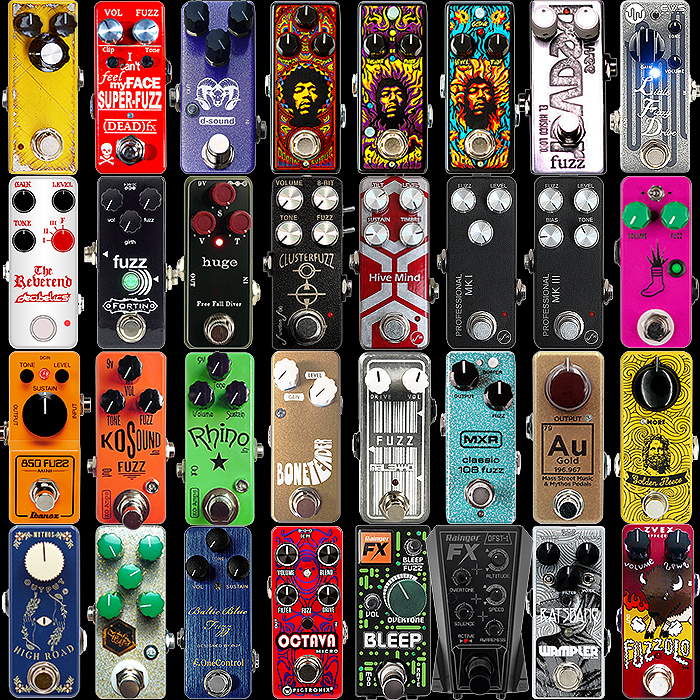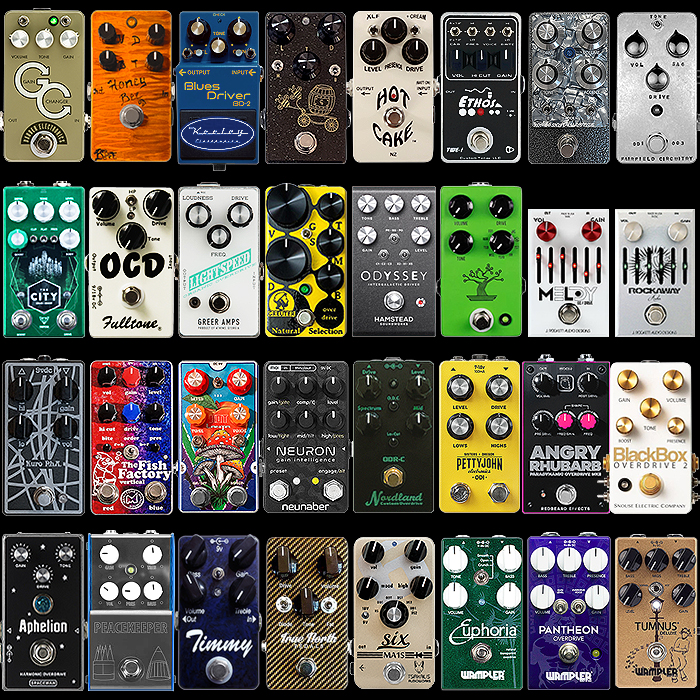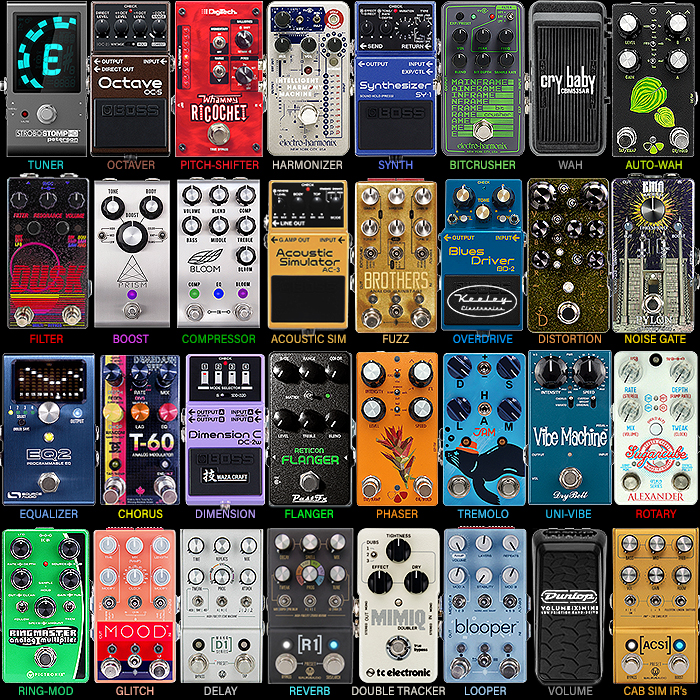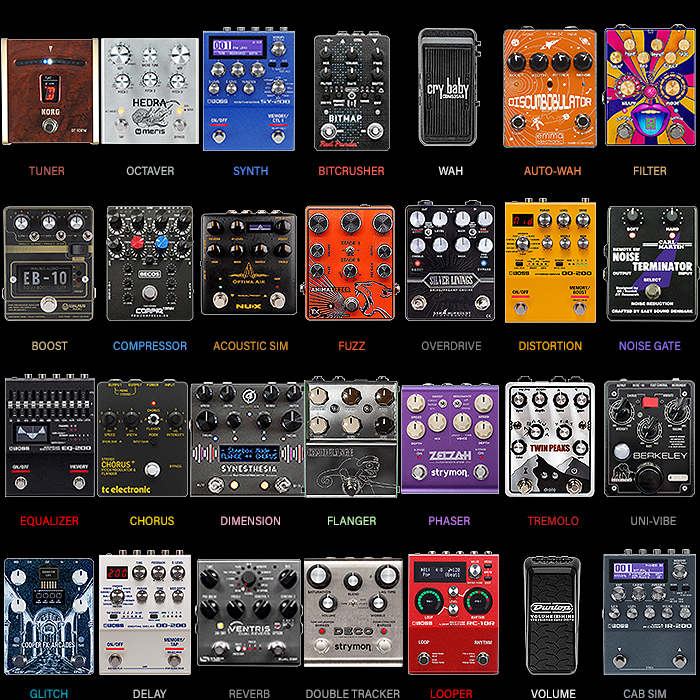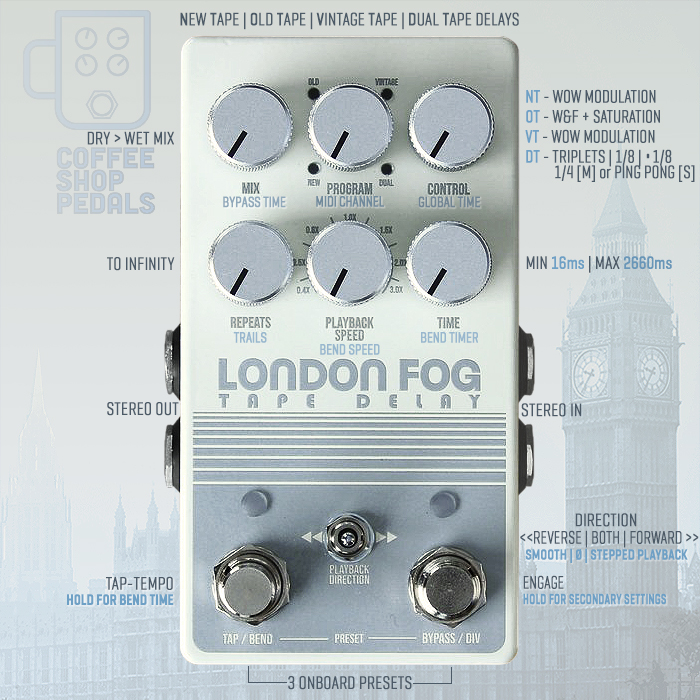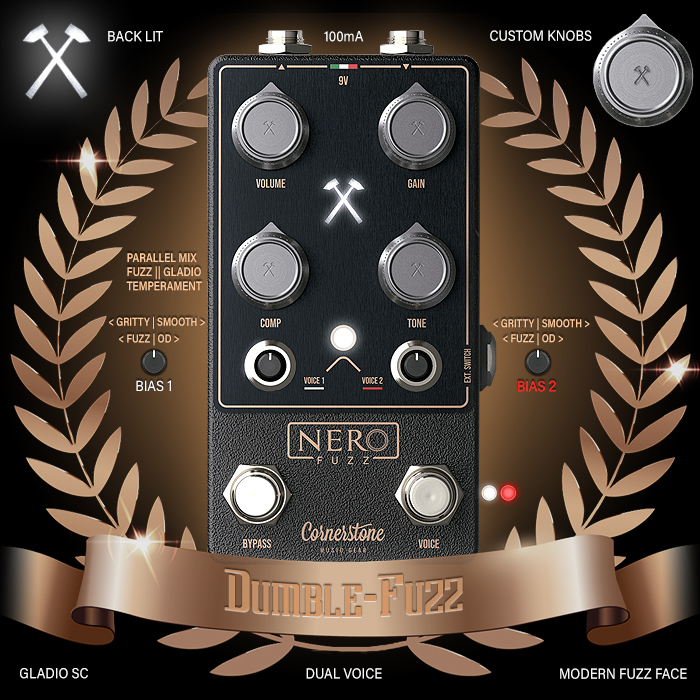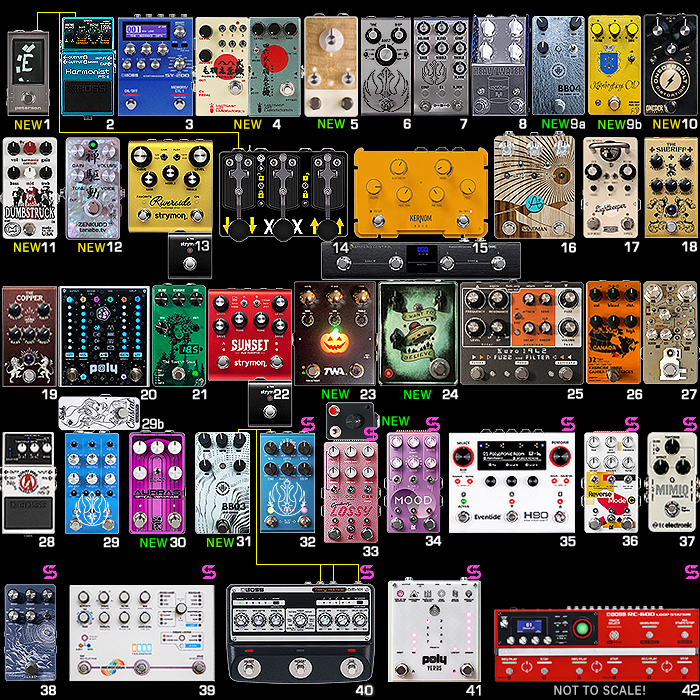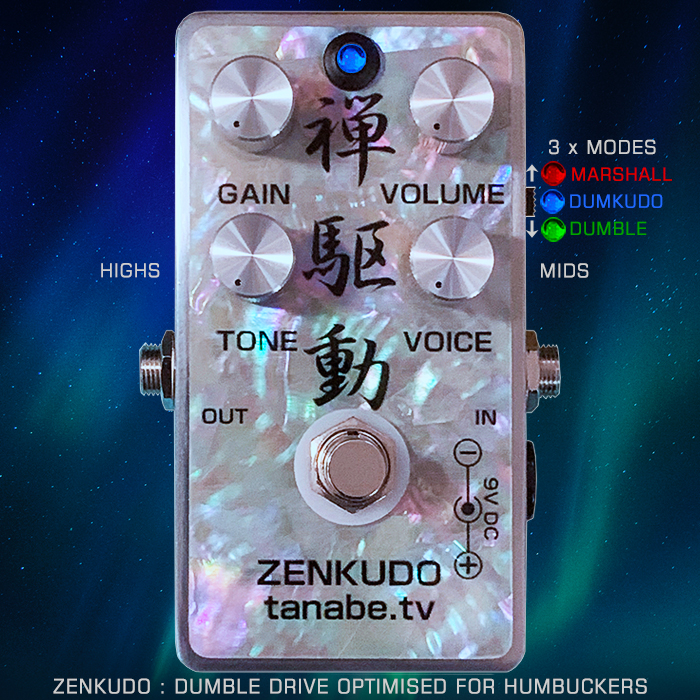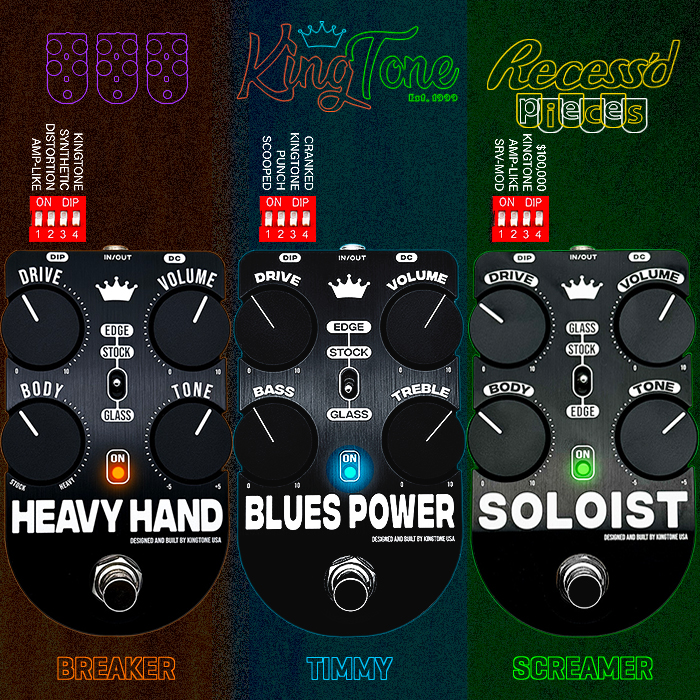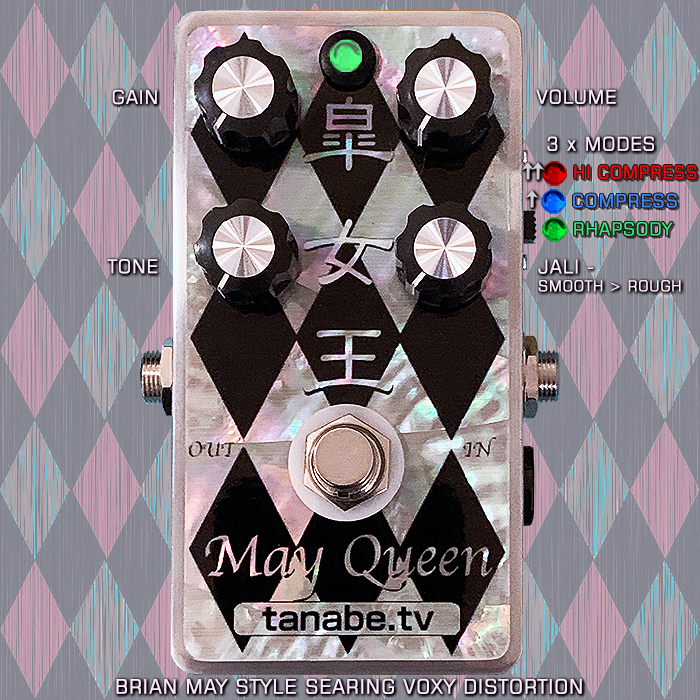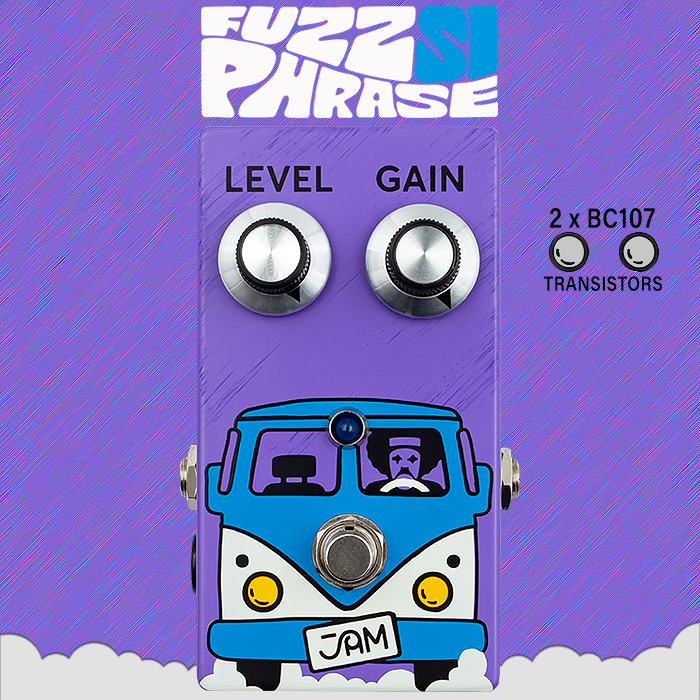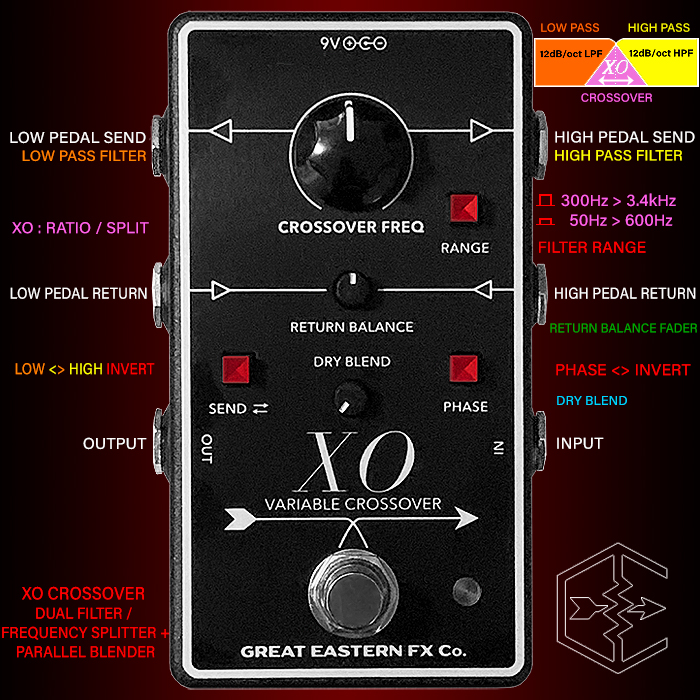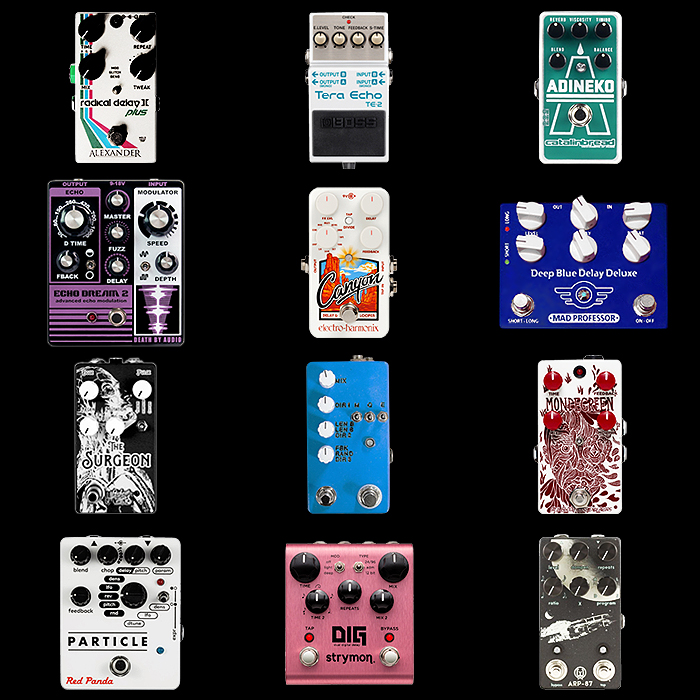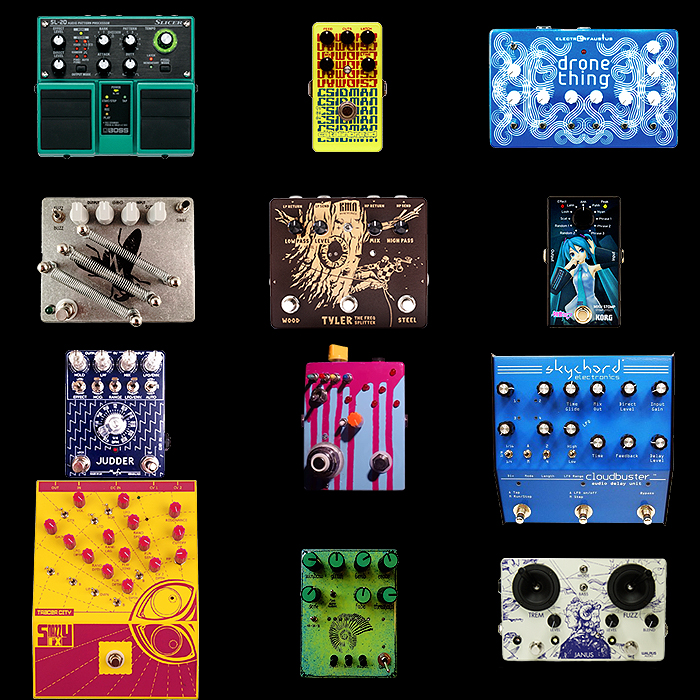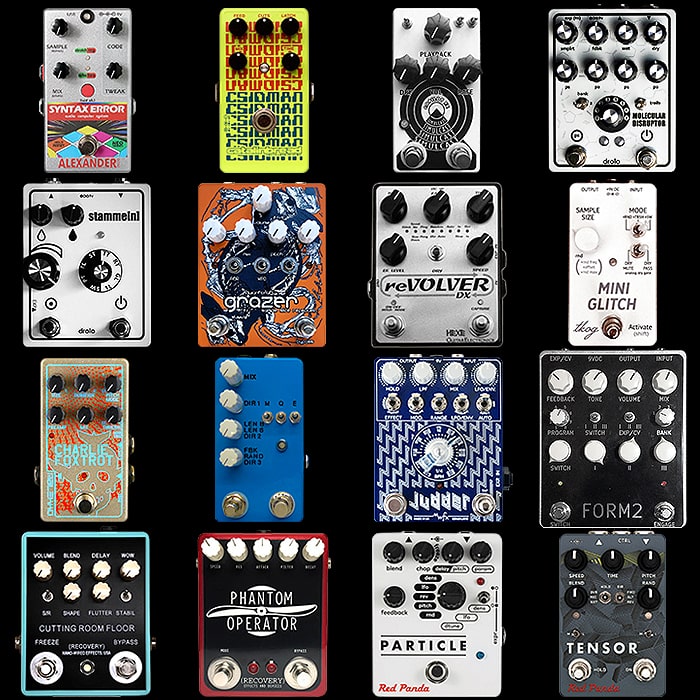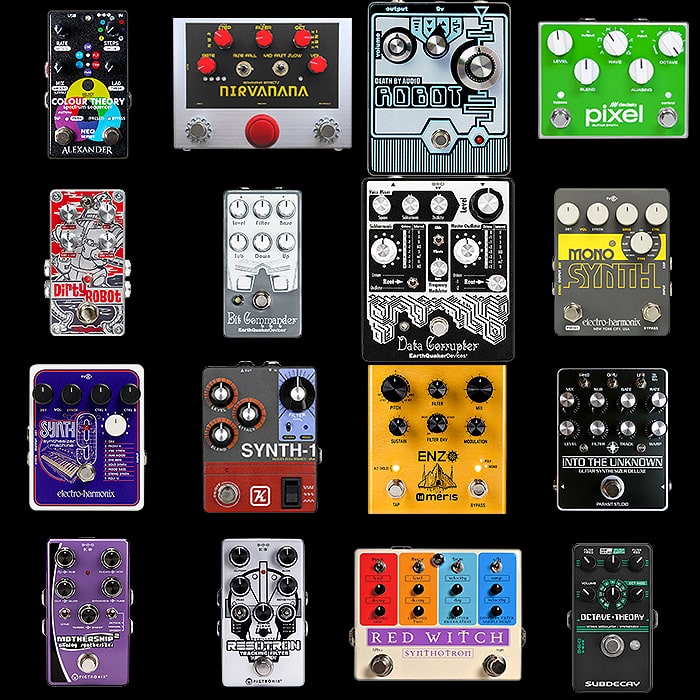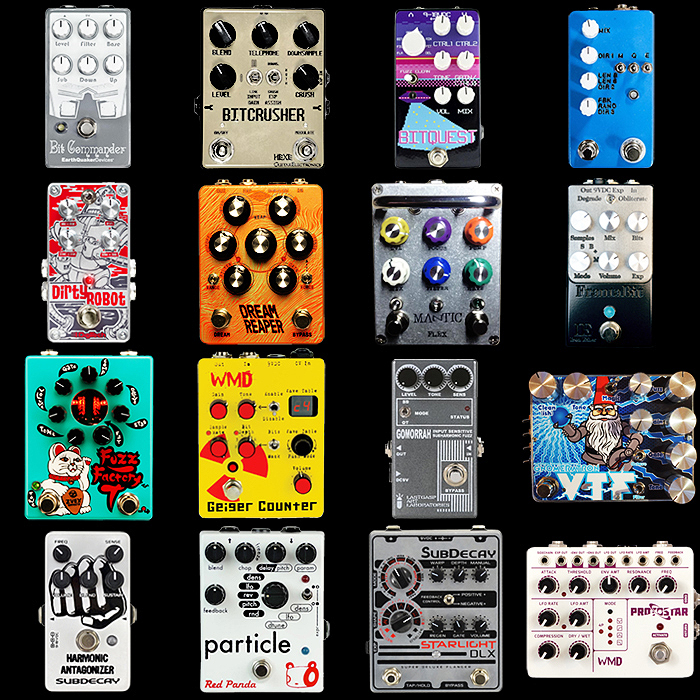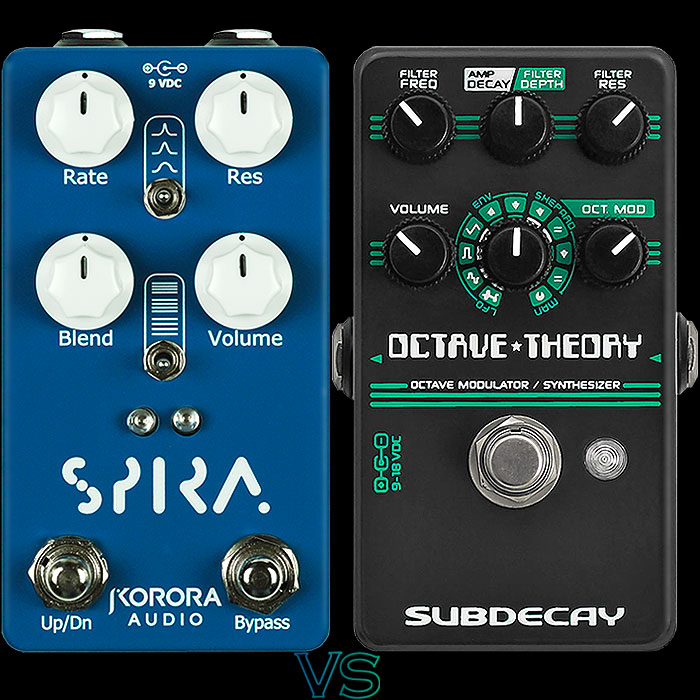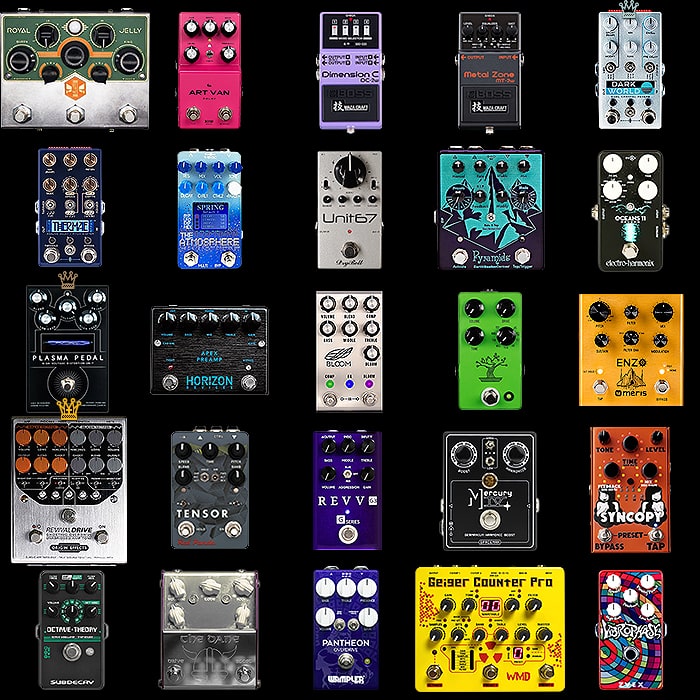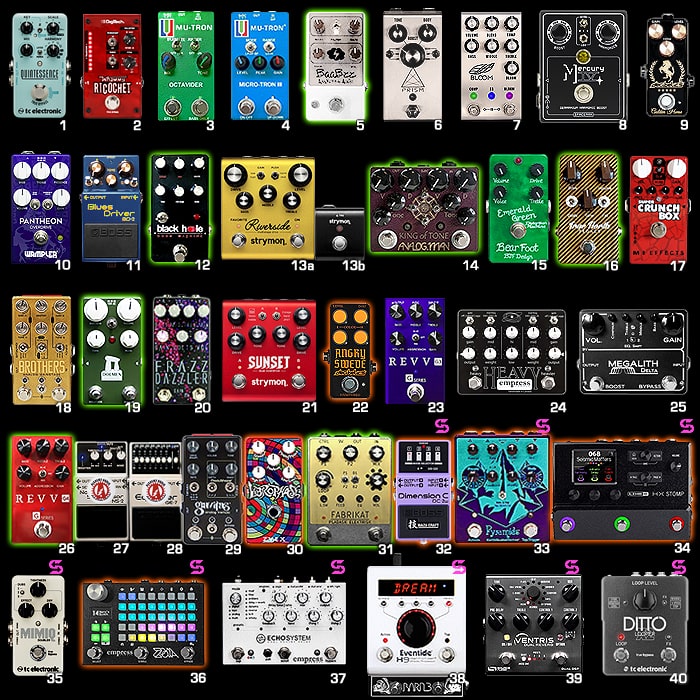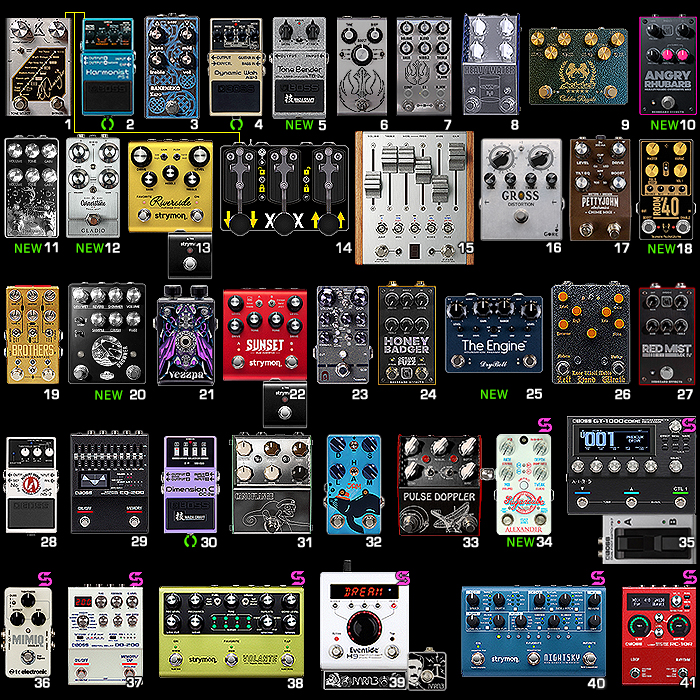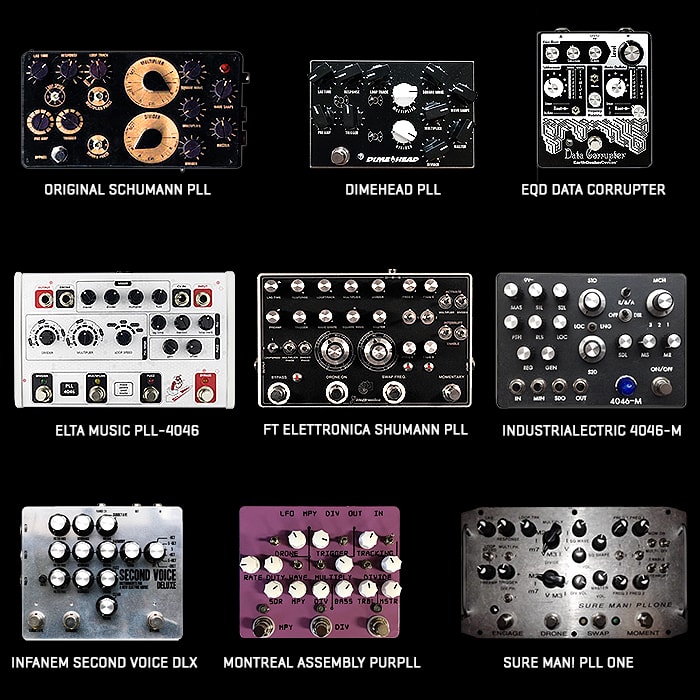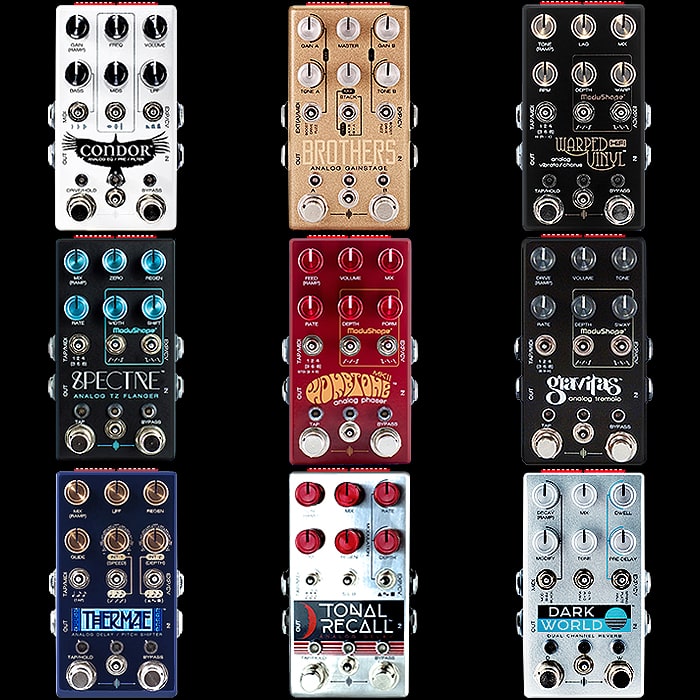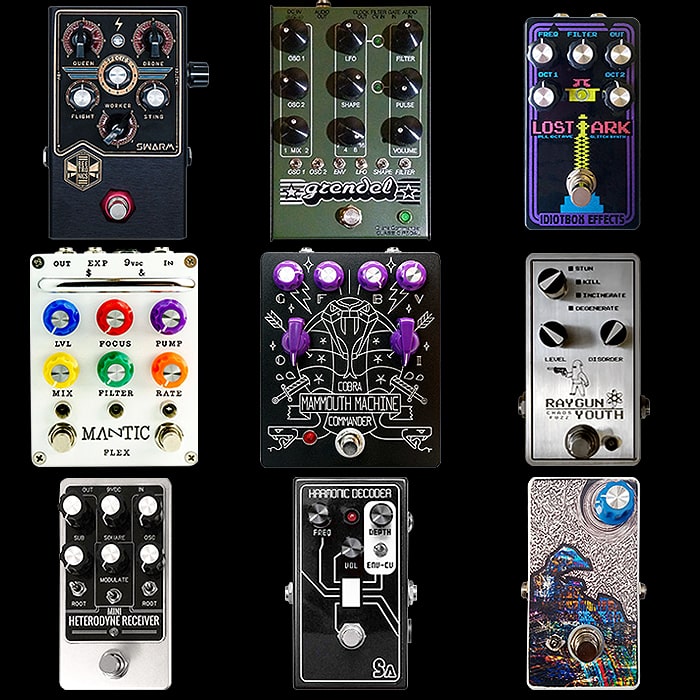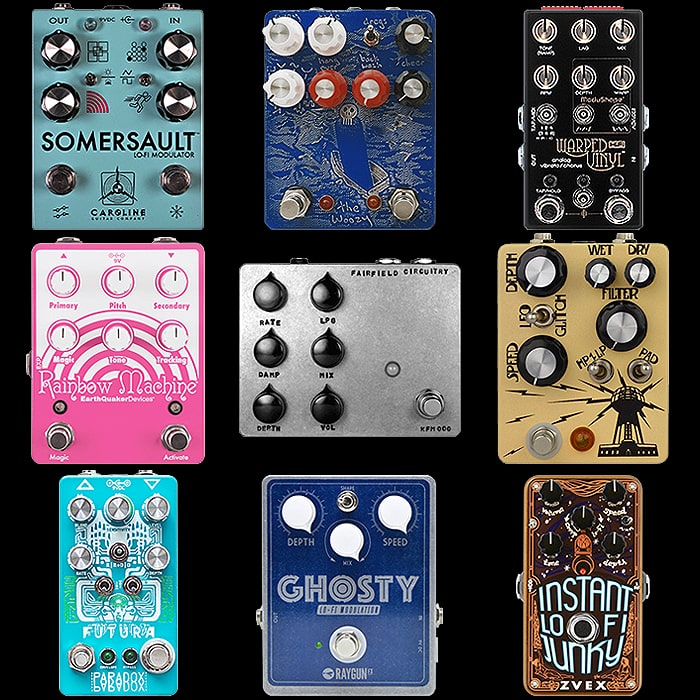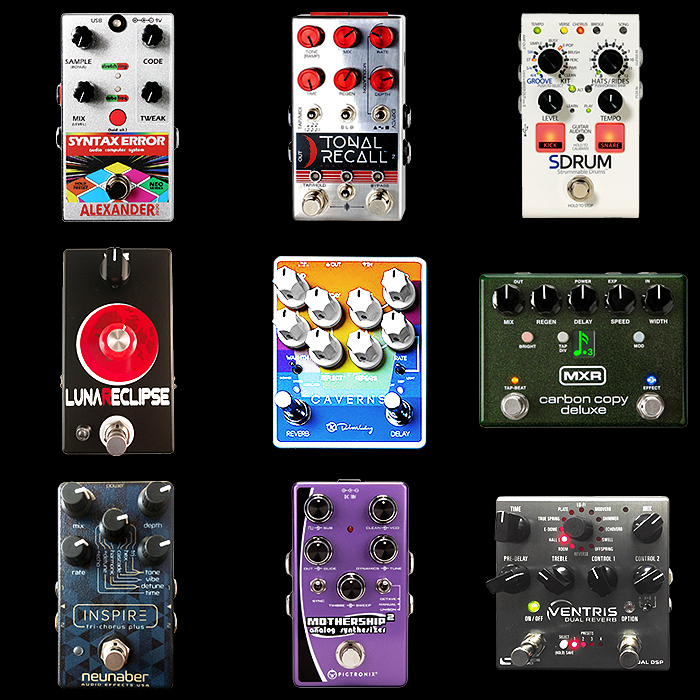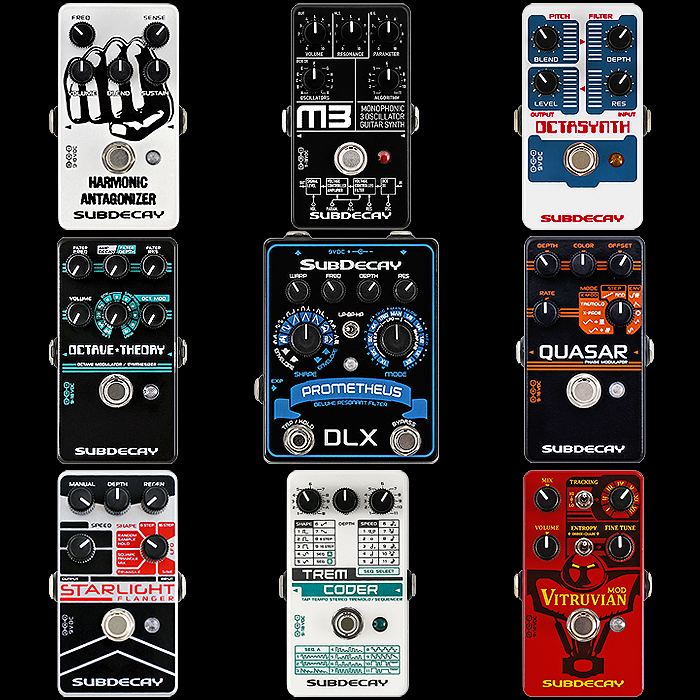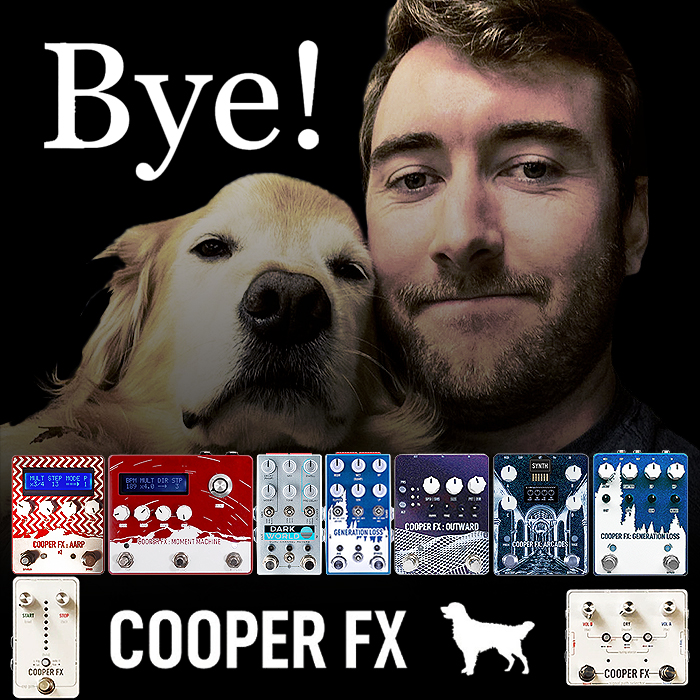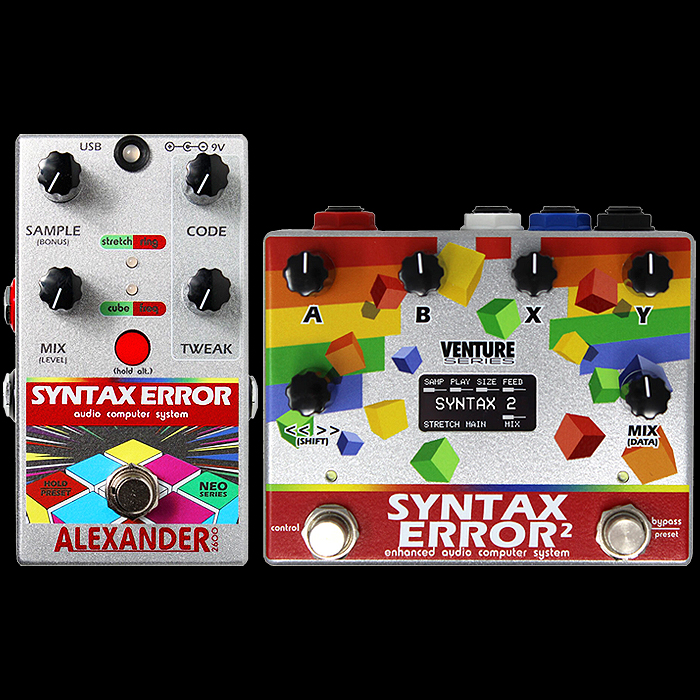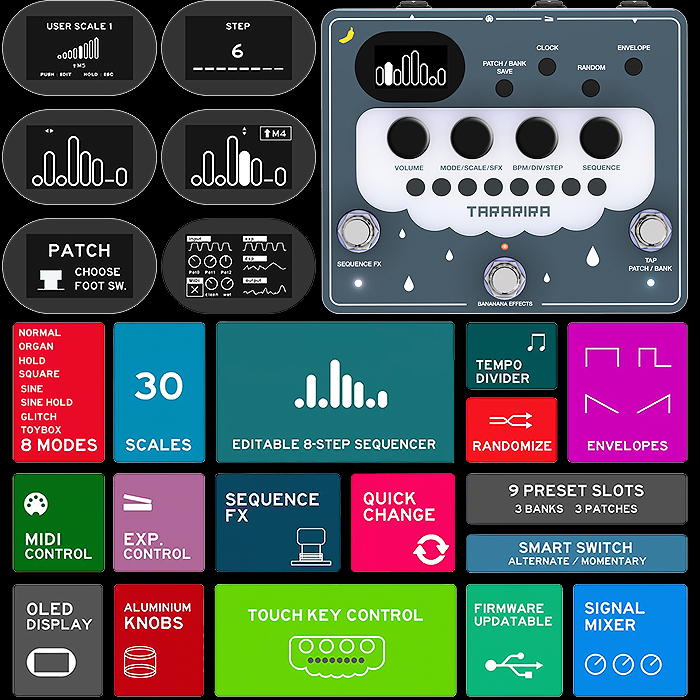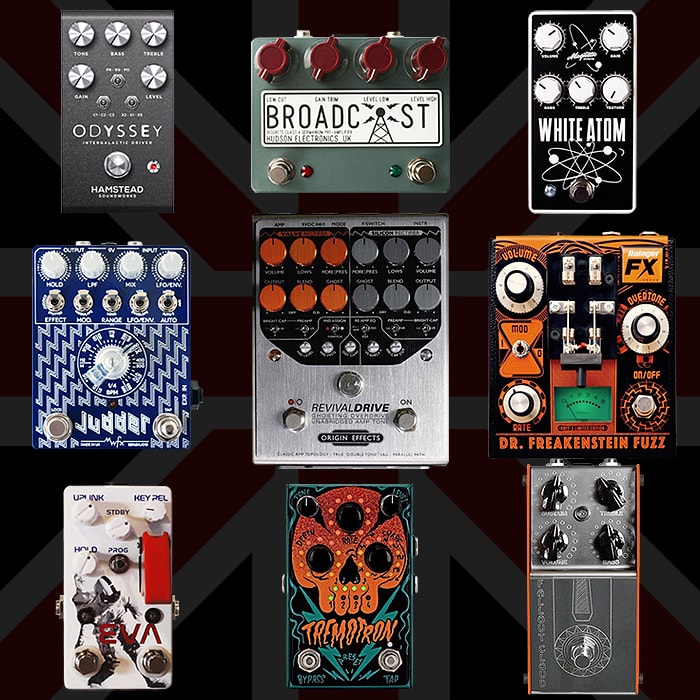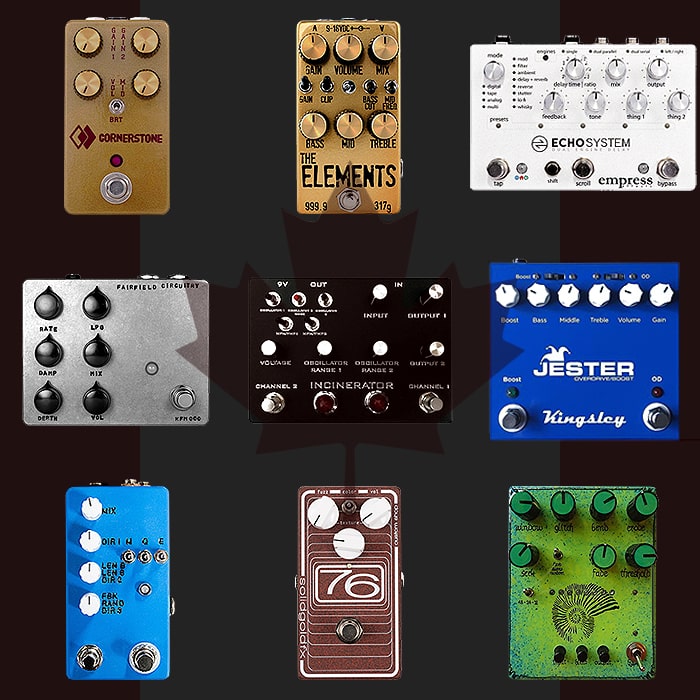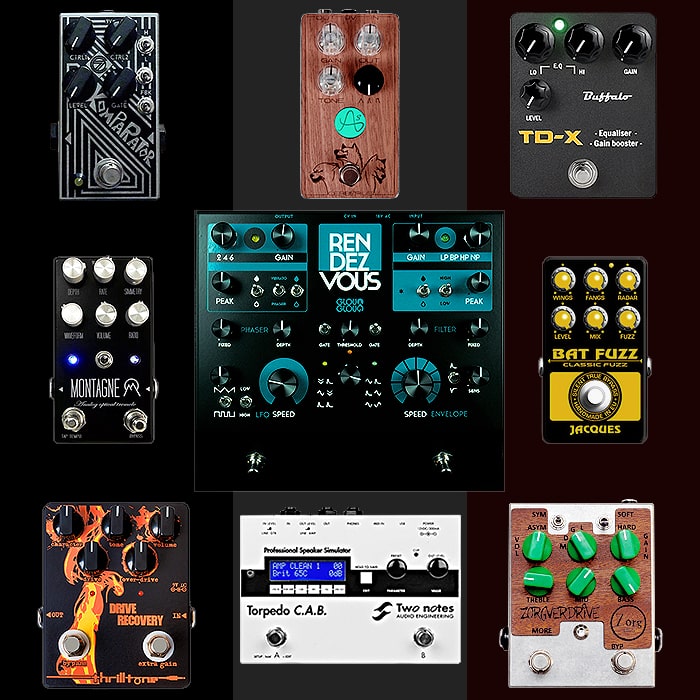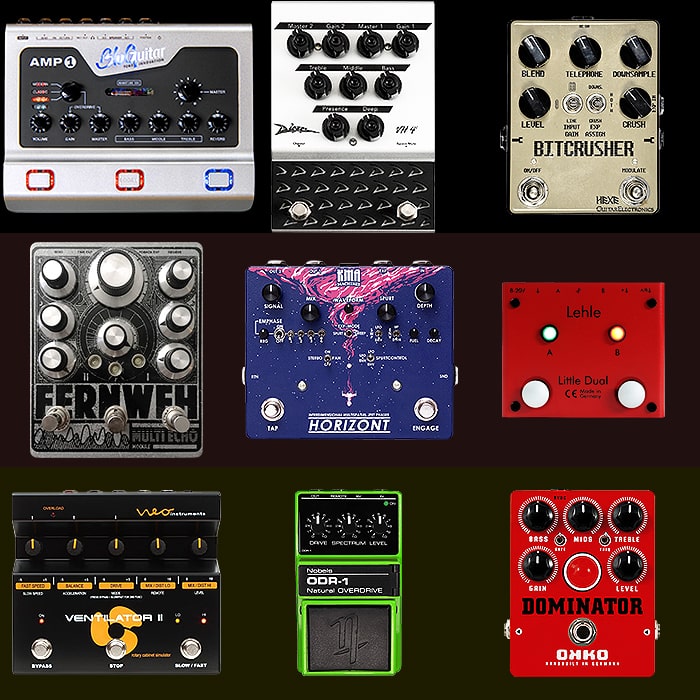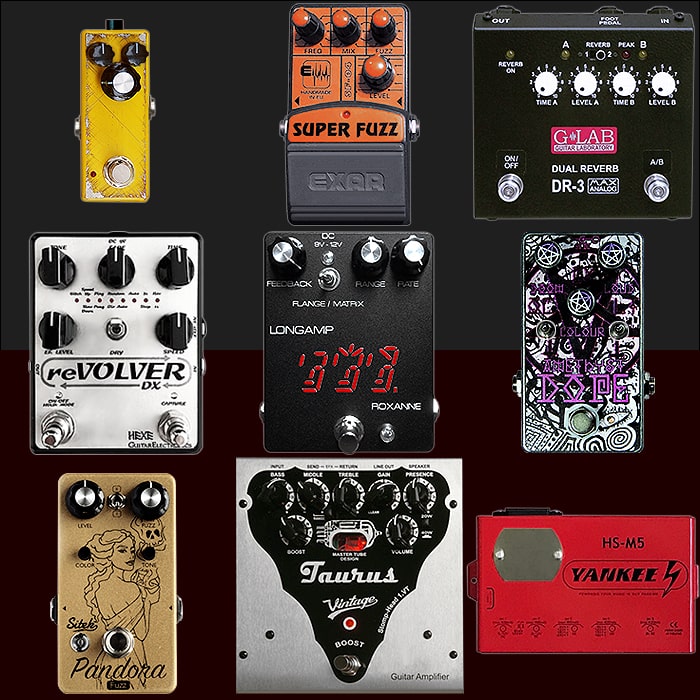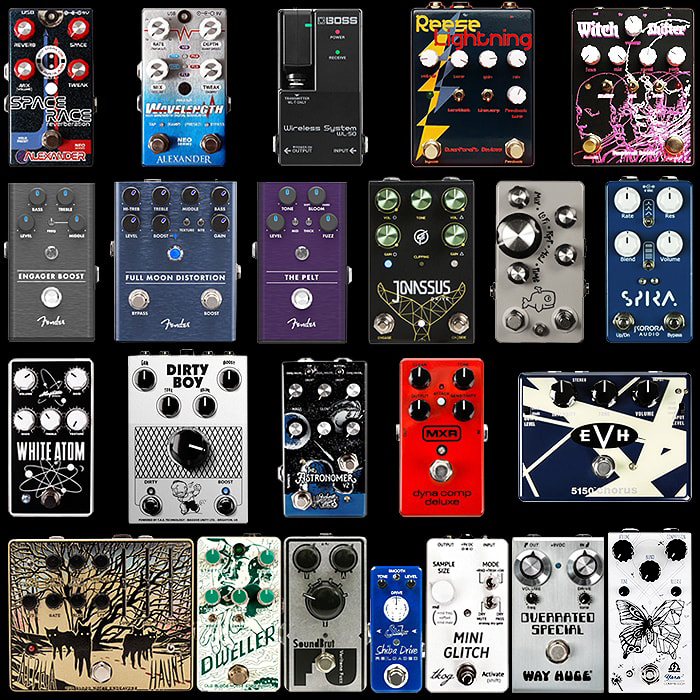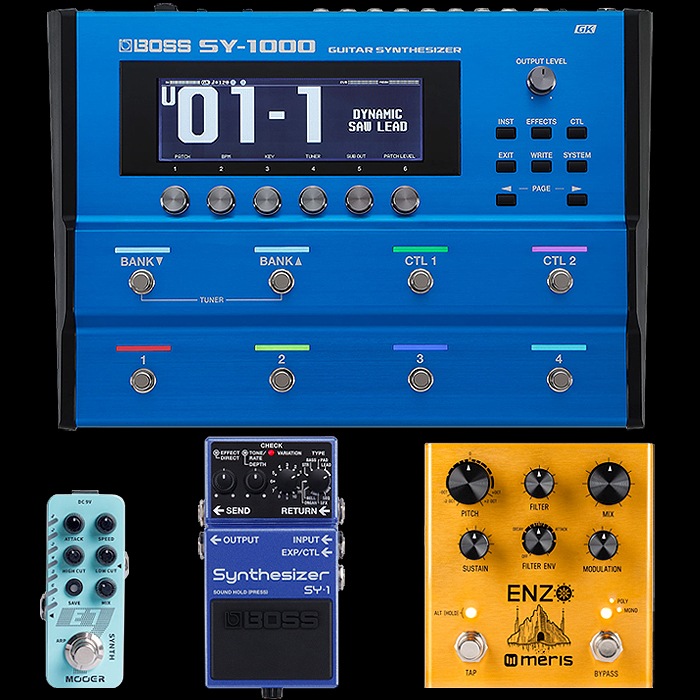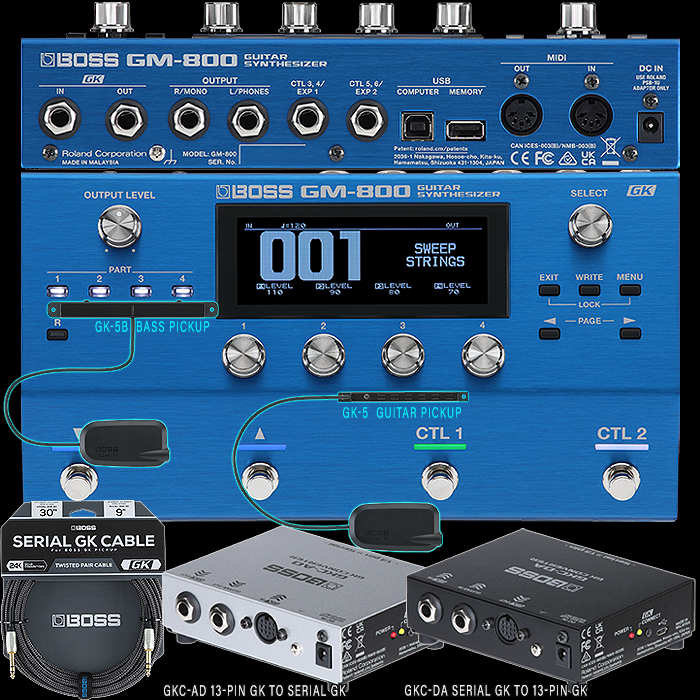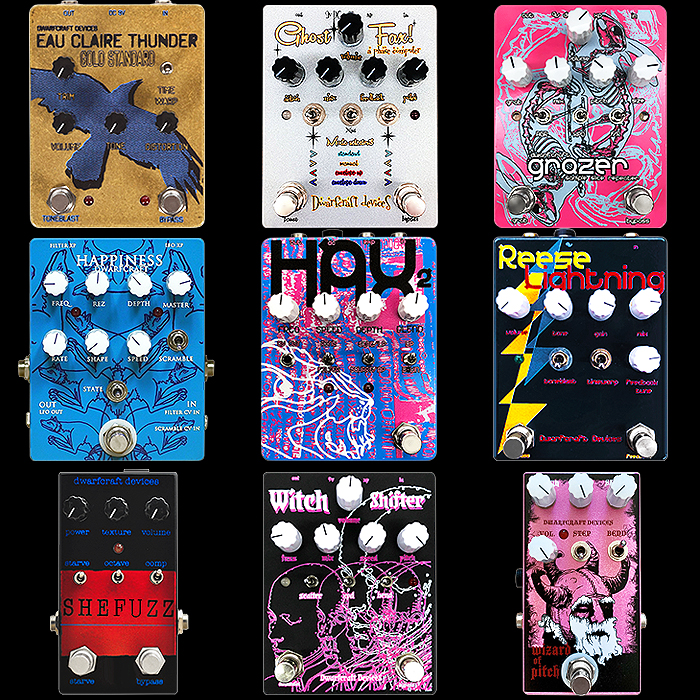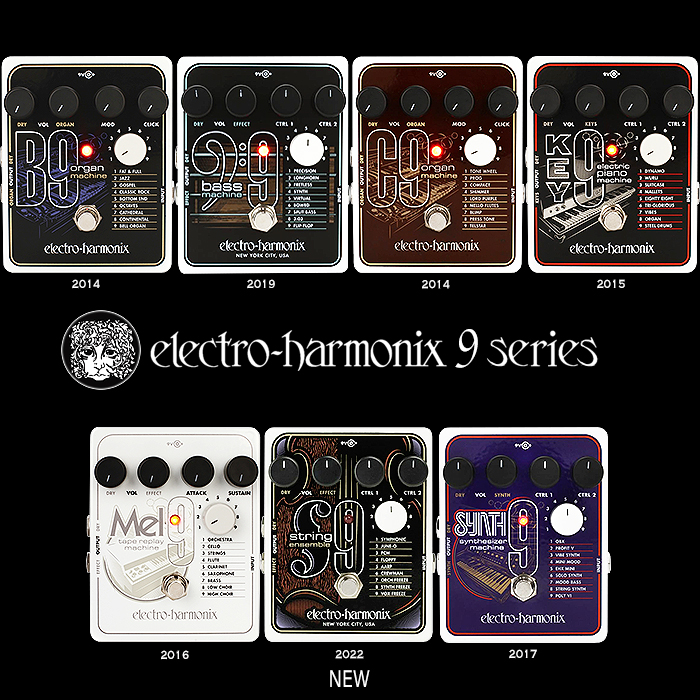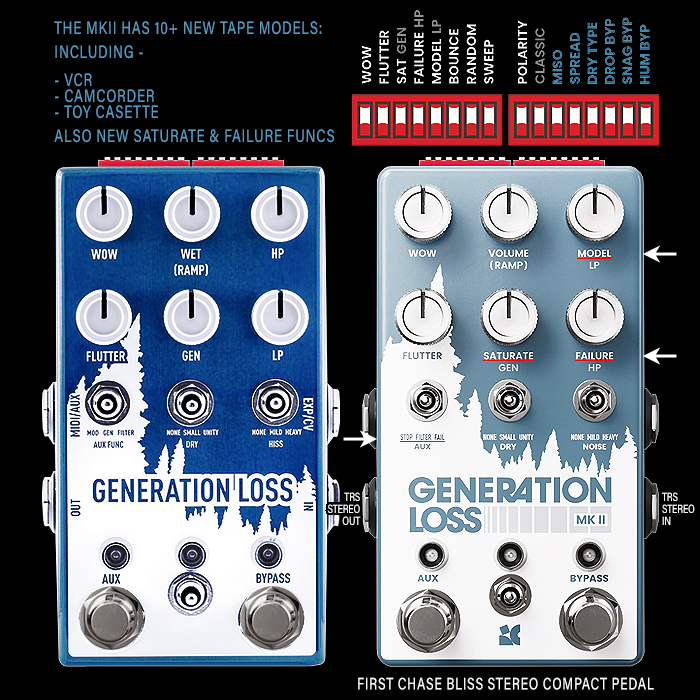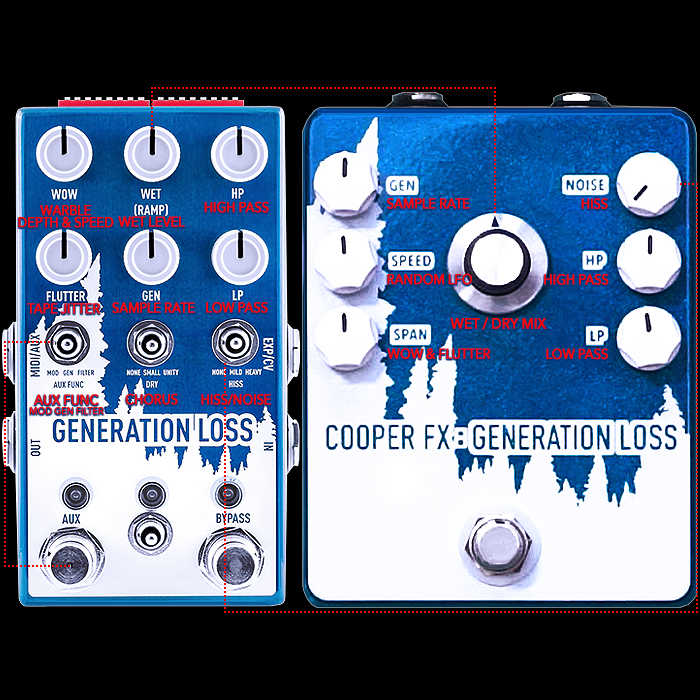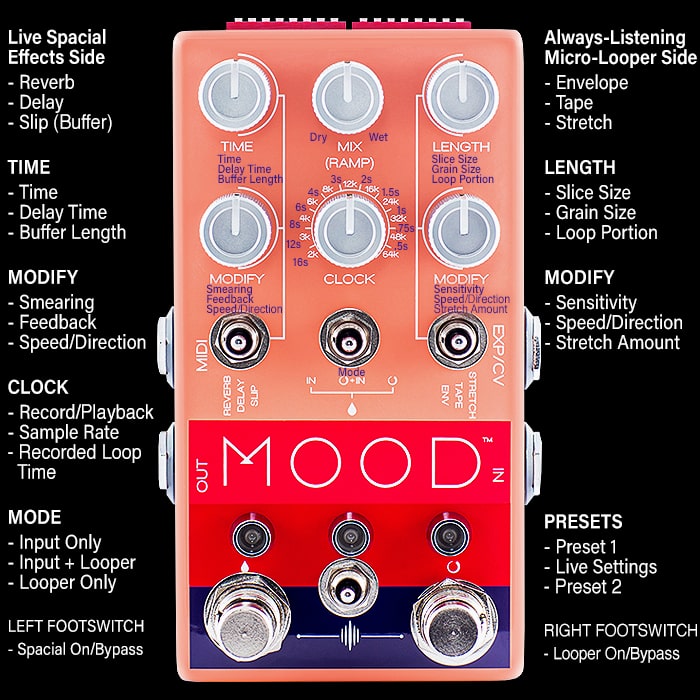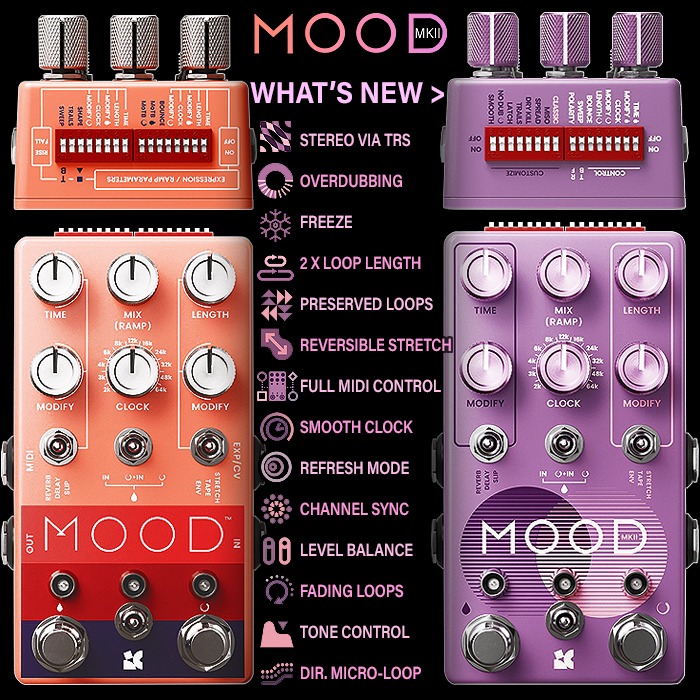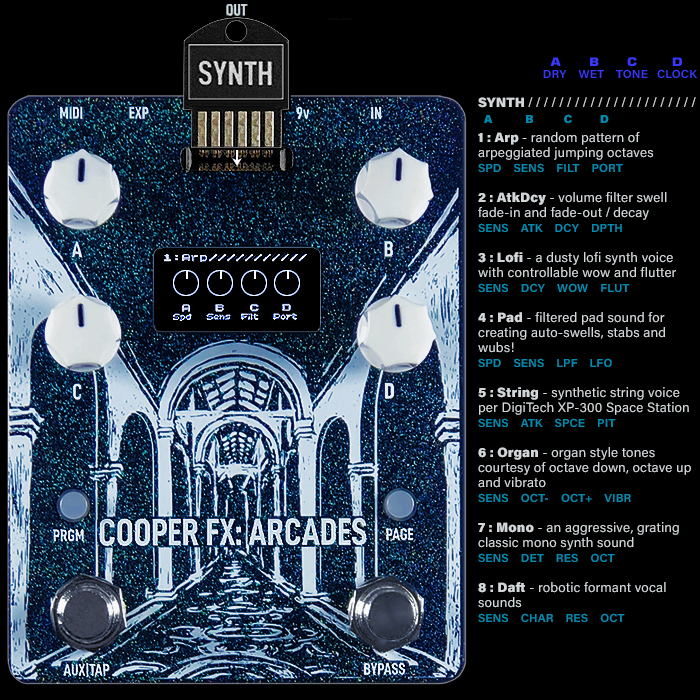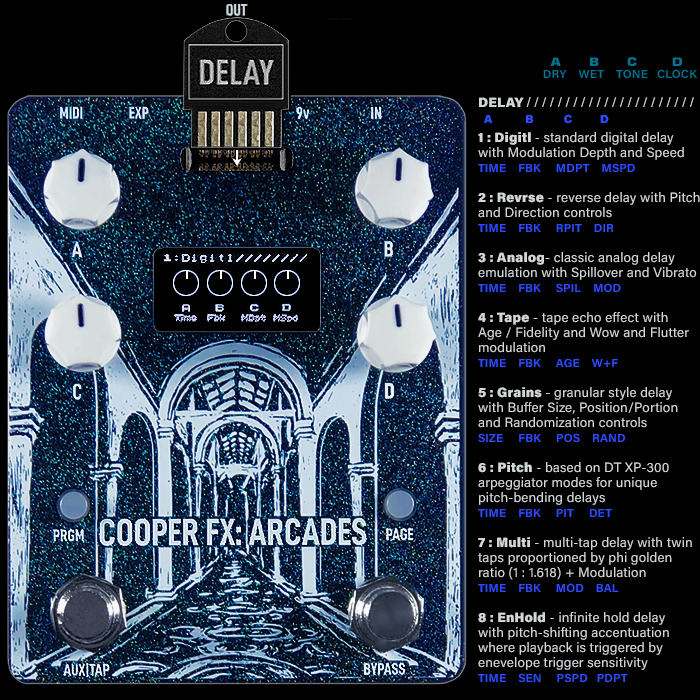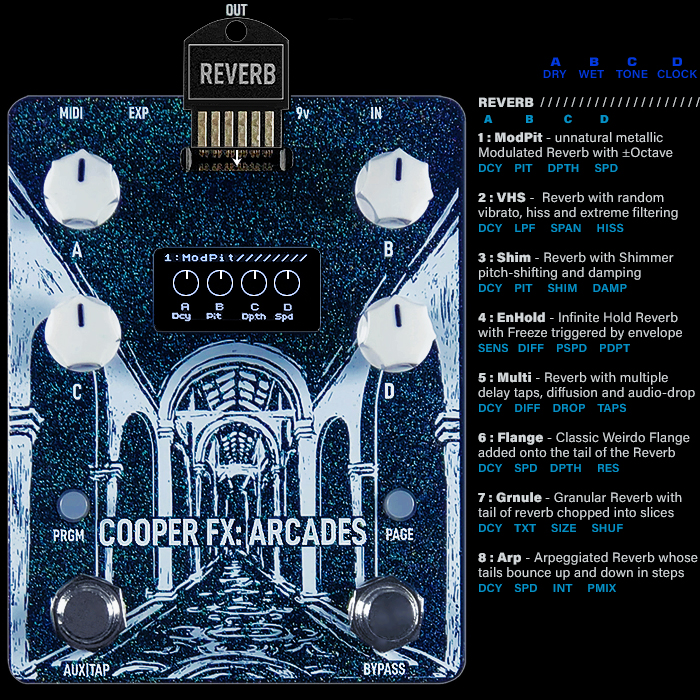Further Thoughts on Granular Synthesis / Glitch Style Pedals

Following last year’s ’Year of Fuzz’, I declared that for 2019 I would shift my focus to Granular Synthesis or Micro-Sampler/Looper / Glitch Effects Pedals. To those ends I did a slightly more long-form overview in mid-December - ’16 of the Best Glitch Effects Pedals’ of which I’ve acquired 5 to date.
In fact I’ve honed the list down further to the six above, which I believe are currently the ’state of the art’ for this genre, with the recent Cooper FX Moment Machine hinting in particular in which direction these types of pedals are likely to evolve.
I believe all of these are in essence sample-loopers, where the signal is broken down into smaller segments or ’grains’ and then processed, modulated and re-arranged - resulting in a variety of modern Multi-FX style effects covering Granular Delays, Pitch-Shifters, Texturizers, Oscillators and Randomizers - and then a variety of sort of signal degradation / bitcrusher style effects.
If we look at something like Eventide’s larger workstation pedals - we have traditionally had roughly 4 categories of grouped effects workstation - Pitch-Shifting/Harmonizing, Modulation, Delay and Reverb. I believe longer term we will end up with a 5th ’Texturizer’ or ’Granular’ category to cover the various Granular Synthesis effects in a single Boss / Strymon / Eventide -style 3-footswitch workstation pedal - with Bank Up/Down mechanics and a couple of hundred presets onboard.
To date the closest pedal to that model is Tom Majeski’s / Cooper FX’s relatively recent Moment Machine Pitch-Shifter - which superficially has many things in common with those larger workstation pedals mentioned, albeit not quite the same control mechanics or interface. For more complicated multi-fx pedals - the control topology and interface is critical in making these relatively complex pedals accessible and properly practically learnable and usable - particularly in live / active scenarios.
I feel that even with the existing larger workstation pedals - the combination of onscreen editing and numbers of dials and switches / shared functions etc. still has not reached its ideal format - even though steady progress has been made, there are still things on the Boss 500 series and Strymon ’Stryfecta’ that I find frustrating and infuriating, and these are still not quite as intuitive and manageable as they should / could be.
So the ’Glitch’ effects pedals are really rather still very much in their infancy in most ways, even though the genre of effects they are producing is as modern as you can get. As I learned from my experience with the Molecular Disruptor - the long-term future for these pedals has to be footswitchable presets as you spend an age dialling each algorithm or patch to its perfect setting - fine-tuning everything by ear etc. and need to do the same thing over again and again - which means it is not practical at all to use these in a spontaneous or live playback fashion. These are all digital style effects, so there should be no objection really to install proper digital control interfaces here with presets onboard. I’ve already indicated how the big guys do it with 3 footswitches, and Stone Deaf FX’s Syncopy and Tremotron show you how to do presets with 2 footswitches by pressing on them simultaneously to scroll through said presets.
I mentioned in my 4 Key Trends for 2019 article how encouraged I was to see the newly evolved format of the Red Panda Particle pedal, but they left out an essential here in not incorporating the Stone Deaf style footswitchable presets. Other than that the pedal is a fantastic update over its predecessor, and the most recent of these I have in the collection. It is also funnily enough the only pedal here ’in distribution’ as such - all the other pedals are made in tiny batches by the figurehead proprietors of those outfits - and each batch gets snapped up in mere moments, so voracious is the appetite for these pedals. As an example Tom Majeski recently released a batch of 200 new Generation Loss signal degradation pedals, and these all went pretty much within minutes. As a fan of Spaceman Effects I’m still not used to these snap releases, and something about them niggles me somewhat - but it’s the only way to acquire these fantastic pedals currently.
I feel that within a few months some of the bigger players in the industry will wake up to the potential of Granular Synthesis and release their own workstation style pedals within this genre, until such a point these 6 pedals are the best this category has to offer in my opinion. I already have the Drolo Molecular Disruptor, Pladask Elektrisk Fabrikat and Red Panda Particle V2. And by hook or by crook intend to get the other 3 listed at some stage this year - Cooper FX Moment Machine, Hexe Guitar Electioncs reVOLVER DX Micro Sampler/Texturizer and Tomkat Pedals Cloudy Digital Multi Effect - with probably the last mentioned at the head of my list of acquisitions. Note that all these pedals - apart from being slightly unobtanium, are on the pricier side - so for most of us some longer term budgeting is required. Getting your budgets to overlap and coincide with batch release dates is another challenge entirely though.
Pedals are listed alphabetically by brand:
Cooper FX Moment Machine Pitch Shifter/Sequencer Workstation - $320 (CooperFX.com)
This is rightly billed as one of, if not the most advanced hardware pitch-shifters on the market - featuring two independent polyphonic pitch shifting engines, a sixteen-step sequencer, more than 200 user-adjustable parameters and 50 presets onboard. You essentially assign a variety of parameters to a 'step' of a sequence and how it interacts with preceding and subsequent steps - applying pitch of course, portamento effects, randomization and the like. Superficially it looks like a sort of Boss 500 series or Strymon big box workstation although the mechanics of the interface are somewhat different. We have one main Menu dial for manipulating key control screen parameters, further augmented by 4 smaller dials - Save, Load, Rand (Randomize) and Init (Re-Initialise). The three footswitches are Tap-Tempo, Function and ByPass - with 'Function' being a multi-assignable footswitch - which works very similar to the Boss 500 series 'CTL' footswitch. So much of what this pedal does is spot on - I feel it's just missing the footswitchable Bank Up/Down and Preset Select. This is my favourite of Tom Majeski's pedals to date - although I still intend to get his Chase Bliss Audio collaboration 'Dark World' which carries over much of his 'Generation Loss' effect.
Drolo Molecular Disruptor V3 Granular Synthesis / Multi-FX - €260 (DavidRolo.com)
I obviously carried out a very detailed review/overview of this pedal recently - highlighting all of its pros and cons. In general this is a superbly capable pedal with lots of magical effects onboard - a tricky part of the ownership here is the onus on you to select which patches to include on your pedal, and then the whole rigmarole of dialling in the perfect tones. The weakness of this pedal can best be summarised by the lack of presets - as it can take an inordinate amount of time to dial in a particular algorithm to your preferences, involving considerable fine-tuning by ear - this makes it really very tricky to switch from one effect to the next and pretty much no dial setting is the same - everything needs to be tweaked to a high degree. Having presets onboard here would make the ownership of one of these so much more enjoyable! That said, there is much to like about the Disruptor, and the number and quality of algorithms you have at your disposal is currently well ahead of the chasing pack.
Hexe Guitar Electronics reVOLVER DX Micro Sampler / Granular Texture Generator - €375 (HexeGuitar.com)
This is your classic waiting list pedal - with still a significant demand on Piotr Zapart to build and deliver these. I believe the turnaround on one of these is still several months or more, but for many it's really worth the wait. This was one of the earliest of these granular style pedals available and an inspiration no doubt to many of these makers. You have 8 modes at your disposal here - Glitch, Speed Up/Slow Down, Ping-Pong direction flip, Random Direction flip, Random Auto re-trigger, Stop/Halt/Smear, Reverse Pitch flip. A lot of these effects involve rapid and random changes to playback - re-capture of loop, direction reverse and changes in pitch and speed. You have 5 dials at your disposal - Tone, Fade, Time, Effect Level and Speed - with Dry kill-switch. The two footswitches are On/Off / Hold Mode and Capture, and you hold down the former / left-hand one to change modes. This is a cool pedal albeit somewhat pricey - and same as many on this page, it could do with onboard presets too.
Pladask Elektrisk Fabrikat Granular Synthesizer / Sample Playback - $300 (PladaskElektrisk.com)
I was very lucky to get through the first Pladask lottery of this year for one of these newer gold-facia pedals. It arrived actually quite far into February, and took 3 weeks near enough to get from Norway and clear UK customs! Although the algorithms are somewhat different, and it does not have the modular upgrade path of the Molecular Disruptor above - these two pedals are nevertheless fairly similar, and I believe they use the same chip. Much like with the Disruptor, you have a rotor switch and toggle for 8 modes per two banks B1 and B2 - with 8 further dials - 4 regular and 4 small to dial in parameters - P1, P2, Mix, Loop, Left Switch, Feedback, EQ and Volume. Ownership of this pedal is somewhat similar to the Disruptor - but the patches here are fixed and in a fixed order - which does simplify things to a degree. Otherwise the process is largely the same - with tweaking various dials by ears to hit that perfect degree of texture! I may at some stage do a head-to-head of the Disruptor vs the Fabrikat as there are so many similarities here - while I've already pretty much decided I'm keeping both - the Disruptor will always have the advantage over upgrade path with swappable modules. I note that more and more of these pedals now come with USB cable ports - although they should really have some sort of bluetooth-enabled app for easier control and easy upgradeability!
Red Panda Lab Particle V2 Granular Delay - £289 (RedPandaLab.com)
This is the latest arrival to my collection of Glitch pedals - very much within the Granular Delay domain, but with several pitch-shifting functions too. The new V2 is vastly improved over its predecessor - as I detailed in my 4 Key Pedal Trends for 2019 feature - pretty much adhering to most of the best-practice advice I included in my previous 2018 Trends article. The pedal is more compact, comes with dual footswitches / tap-tempo and 4 presets onboard. This is a fantastic example of an exemplary version update - the control topology is simplified, all the previous features are kept intact but added to - you really could not ask more of Red Panda Lab... But I could - as I feel that the lack of footswitchable switching between presets a la Stone Deaf Tremotron is something of a usability oversight here. Other than that this pedal is pretty much perfect for its type - with its 5 Delay modes - Density, LFO Time Stretch, Reverse, Pitch and Random, and 3 Pitch modes - Density, LFO Modulation and Detune/Randomization. The 5 parameter dials - Blend, Chop/Freeze, Delay/Pitch, Feedback and Parameter are also all very straightforward. I have no doubt that this is the most elegant pedal of this particular type - it also has a USB port on the rear for midi-syncing and updates I presume - if it had the footswitchable preset selector it would be absolute perfection - but it's near enough as is.
Tomkat Pedals Cloudy Digital Multi Effect - $385 (TomkatPedals.com)
This is the most recent entrant into the Granular Synthesis market as far as I am aware - there was a small batch made available at the start of March - an event which somehow entirely passed me by! I've been following Tom Kogut for a while - I initially came across his Day Dreamer Echo-Verb which just missed out on my selection back then, but would have made the cut in its improved Super Day Dreamer edition with further controls and tap-tempo. Besides the echo-verb, Tom is best known for his mid-size enclosure fuzz pedals and their unique graphics. The 'Cloudy' is actually a pedal adaption of Mutable Instruments 'Clouds' rack-based Granular Audio Processor - I of course much prefer using pedal knobs and switches versus the CV cable approach of modular synths - so it's a win-win situation for me. The 'Cloudy' contains 6 really cool modes - and has stereo output enabled via TRS splitter cable (like the Particle V2 does). The 6 modes - Granular Processor, Pitch Shifter/Time Stretcher, Looping Delay, Spectral Madness, Emmiverb and Resonestor are further augmented by 6 large dials - Size, Pitch, Density, Position, Mix, Texture; and 5 small knobs - Out Level, Pan, Verb, Feedback and In Level. You have two push-button switches also - the left hand one changes down the signal quality from High Quality Stereo to High Quality Mono, Low Quality Stereo and Low Quality Mono - or a buffer size from 8 seconds down to 1. You also have dual footswitches with the left-hand one activating a Freeze/Hold function. Yet again, this pedal could do with presets, but otherwise is pretty perfect in most respects. I used to be of a mind that the more modes the better, but this isn't necessarily the case - better to have 6 brilliant modes than 10 or 16 of average quality surely. Excellent demo by Devon Blue Whitaker above by the way.
Final Thoughts
The trickiest thing about the above pedals is actually getting your hands on them. As of writing this article all of these as such are currently 'Out of Stock', and when they come back around again they barely stay in stock for long enough for you to snap one up. It depends what you're doing at the time - as if you're doing something else when the alert comes in - you will have missed that particular opportunity for a few months.
As I stated in the intro - I still feel that these pedals are largely in their infancy, and smarter approaches will evolve eventually to more easily set up and control these pedals. One of the best ways to do that is have multiple banks of presets with quality reference settings already dialled in.
As mentioned, I already have three of the above listed, and the process of dialling things in can be highly frustrating and time-consuming, and without presets it's all a sort of futile activity as you spend hours tweaking the dials to their perfect settings - which you then loose when you need to change to another mode or patch.
All of 'pedaldom' could actually do with a lot more UI and UX experts - as often the control topology is at the tail-end of the circuit design process, rather than a leading part of the entire exercise. For simpler pedals it matters less how things are arranged - and you don't need legends even to be present. For these more complex ones here we really need all manner of smart changes to make this evolving genre more palatable. Would be great to get Strymon onboard here in some regard, as they generally do a great job with default presets - also the decision to set key sweetspots to the 12 o'clock dial positions - so that you can easily sweep through different modes.
As I reported for the Molecular Disruptor - the dial settings are so vastly different at the moment that there is no equivalency from one effect to the next - this includes things like standardising output levels and putting in various High and Low Pass filters into the circuit - both as frequency and peak signal filters.
It's certainly an exciting area to be involved in right now as things are moving rapidly and changing relatively fast. We really just need more of these to be stereo output, and to have onboard footswitchable presets!

